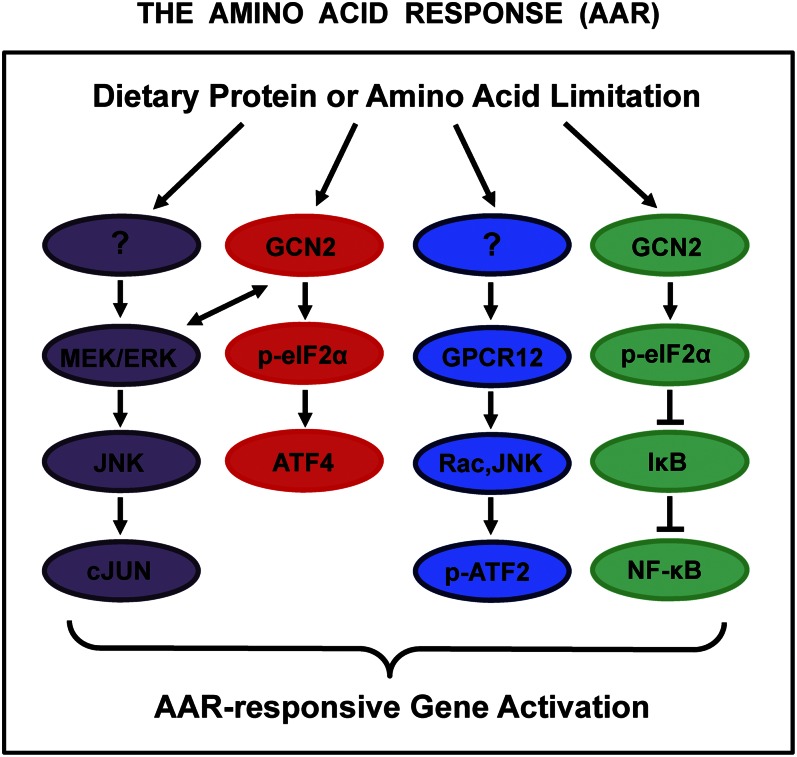Figure 1.
Signal transduction pathways of the amino acid (AA) response (AAR). The AAR represents a collection of signal transduction pathways that are activated by AA deprivation of mammalian cells. There are differences between cell types, such as which mitogen-activated protein kinases are activated, but the central pathway of general control nonderepressible 2 (GCN2)–eukaryotic initiation factor 2–activating transcription factor 4 (ATF4) appears to be ubiquitously expressed and regulated in all tissues. Likewise, the phosphorylation of ATF2 may well be a universal response, but the tissue distribution of the nuclear factor κB (NF-κB) activation has not been established. The autoregulatory induction of cJUN by the AAR occurs in cultured transformed cells to a much greater extent than in nontransformed counterparts, although the response has not yet been studied in vivo. The initial AA sensor for the cJUN and phosphorylated ATF2 (p-ATF2) pathways has not been determined conclusively. Interestingly, the 4 pathways shown rely on a variety of molecular mechanisms. The synthesis of ATF4 protein is translationally controlled, the phosphorylation of preexisting cJUN and ATF2 protein is mediated by mitogen-activated protein kinase signaling, and NF-κB activation occurs as a consequence of disassociation, but not degradation, of IκB. See the text for additional details. GPCR, G protein–coupled receptor; IκB, inhibitory kappa beta; JNK, c-Jun N-terminal kinase; MEK/ERK, mitogen-activated protein kinase/extracellular-regulated kinase.

